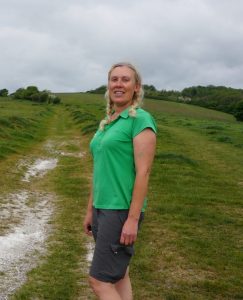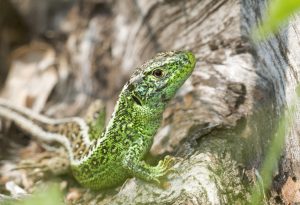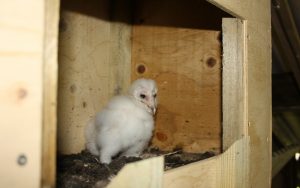Big boost for nature in South Downs National Park as grants are announced
April 5, 2024
Creating new havens for butterflies and barn owls, establishing new wetlands and saving the under-threat juniper tree are among the exciting projects to benefit from a funding boost of over £130,000.
Thirteen community-led projects across Hampshire and Sussex will be receiving a ReNature grant from the South Downs National Park Trust to help restore biodiversity.
It comes as the ReNature initiative enters its third year with an ambitious goal of creating 13,000 hectares of new habitat to help wildlife flourish, as well as improving existing nature havens in the National Park.
Among the projects will be creating a new wildflower meadow at Twyford, near Winchester, to help encourage butterflies and small mammals. At Slindon, in West Sussex, hedgerows will be restored to help bird species, such as blue tits and yellowhammer, while in Lewes work will take place to restore a chalk stream and provide more wetland habitat for species such as dragonflies and lapwings.
At Queen Elizabeth Country Park, near Waterlooville, there will be a concerted effort to bring back the juniper tree, one of Britain’s three native conifer species that has struggled in recent decades across the UK due to diseases and poor seed quality. Adapted to chalk downland, it supports a host of unique insects and fungi, such as the juniper carpet moth, and is an important food source for thrushes and fieldfare. The project will save the country park’s last two juniper trees and plant a wildlife corridor of more than 100 juniper trees.

Jan Knowlson, Biodiversity Officer for the National Park, said: “ReNature is about creating nature everywhere, for everyone, and involves establishing new wildlife havens and improving existing habitats such as chalk grassland, heathland and woodland.
“The biodiversity crisis is not going away – one in six species are now at risk of being lost in Great Britain and the figure from a decade ago was one in 10.
“The time for action is now and that’s why these grants are so important.
“The National Park is doing a lot of work with major landowners around establishing new habitats, but there’s also an incredible amount of work taking place in the community on smaller-scale projects. Often these smaller projects struggle for funding and that’s where a ReNature grant can make a huge difference.”
The full list of projects to benefit are:
Churchfield Meadow Biodiversity Project, near Winchester – run by Twyford Valley Conservation CIC, plans are afoot to create a wildflower meadow and improve riverbank management to help encourage small mammals. £14,200
Community Cut and Collect scheme in the Western Downs in Hampshire – provide a cut and collect machine for the local ranger team that will be available to landowners and organisations. The machine encourages the growth of wildflowers to help bees and butterflies. £43,754
Selborne Small Meadows and Grassland Network Project – based at Gilbert White House and Garden, the project will help maintain a wildflower meadow and support other small meadows in the local area through the Selborne Landscape Partnership, which is made up of local farmers. £4,015
Restoration of Jolly Robins pond by Hawley Parish Council, near Liss – restore an overgrown, clogged and barely visible village pond to help biodiversity return. £3,000
Landport Brooks, Lewes – led by Eastbourne Council and the Ouse & Adur Rivers Trust, the project will help restore a chalk stream called the Papermill Cut and create wetland features for a wide range of species, together with public access and interpretation panels. £10,000

Cattle conservation grazing project at Longmoor, near Petersfield – led by Hampshire and Isle of Wight Wildlife Trust, the initiative is developing fence-free grazing to help maintain the heathland site and encourage reptiles such as the sand lizard. £7,728

Palace Field wildflower meadow, Droxford – led by Droxford Parish Council and Sustainable Droxford, the project will transform a rough grazing area to wildflower meadow to attract pollinators. A barn owl box will also be replaced and improved. £2,440
Woolmer Forest Site of Special Scientific Interest, near Bordon – led by Hampshire and Isle of Wight Wildlife Trust, the conservation grazing will be improved by the introduction of no-fence collars. This will help support species that rely on the lowland heathers such as nightjars, woodlarks and Dartford warblers. £10,752
Itford Farm, at Beddingham, near Lewes – led by South Downs Youth Hostel Association (YHA), the funding will help conserve and enhance a nature site with increased access opportunities for the benefit of local schools, youth groups and the wider community. £25,000
Wetland restoration at Brook Farm, Midhurst – funding for project design and feasibility for wetland restoration and creating new habitats for water voles. £6,403
Saving the juniper tree at Queen Elizabeth Forest, Hampshire – the rescue of the last two remaining juniper trees in the forest. An area of the commercial plantation will be cleared, returned to chalk downland, and planted with more than 100 juniper trees. £2,925
Harnessing the power of hedgerows, Slindon, West Sussex – led by Slindon Parish Council, an overgrown hedge will be rejuvenated, removing a wire fence, to create a layered hedge that will provide a wildlife refuge. £2,680
Lórien Rewilding at Steyning, West Sussex – planting new hedgerows, creating new wildlife ponds and reseeding to encourage greater diversity of flowers and grasses. £8,756
The ReNature initiative is being led by the National Park Authority in partnership with the South Downs National Park Trust, the official charity for the National Park. Significant funding has been generated through donations and grants from the public and private sector, as well as National Lottery funding.
To help with the fundraising and to donate visit www.southdownstrust.org.uk
Future rounds of applications for ReNature grants may take place. To be put on the notification list please email grants@southdowns.gov.uk
- The ReNature initiative has already helped to create over 400 hectares of new wildlife habitat – or 640 football pitches – such as new ponds, grasslands and wildflower meadows, to help nature flourish.
- In addition to newly-created wildlife havens, 4,312 hectares of existing habitat has been improved for nature – an area bigger than the city of Portsmouth. This work includes planting over 16,383 trees and creating or restoring 14 ponds which provide crucial habitat for so many of our species.
- There are big plans for the future, with an additional 1,200 hectares already having been put forward for future habitat creation or secured via a ReNature Credits Scheme, and the National Park working on over 368 active nature recovery projects with its partners.
- ReNature launched in 2021 with two primary goals:
- Increase the amount of land that is primarily managed for nature in the National Park to 33 per cent – creating 13,000 hectares of new habitat. This goes beyond current UN-backed conservation targets of 30 per cent by 2030 (30 for 30).
- Ensure that the remaining 67 per cent of the National Park is nature-friendly by 2030 through improving existing habitats across farms, woods, rivers, towns and villages.
- For more information visit southdowns.gov.uk/renature/ Partners and landowners may also be interested in visiting the Nature Recovery Hub www.southdowns.gov.uk/nature-recovery-information-for-delivery-partners/
